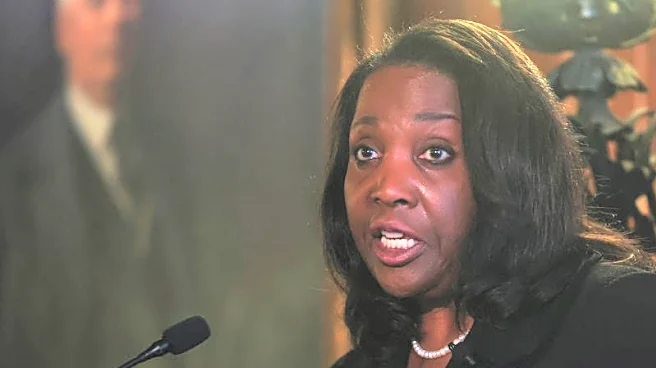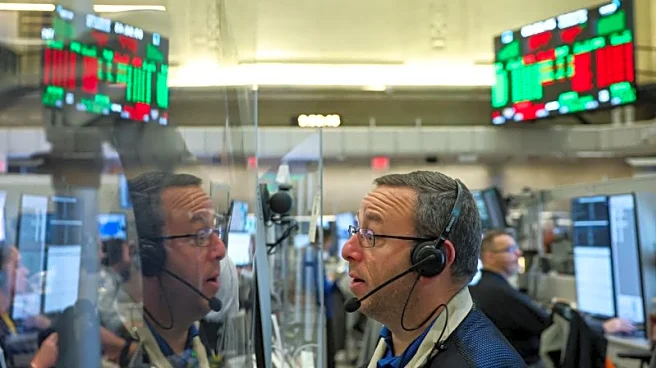What's Happening?
Federal Reserve officials are focusing on controlling inflation while maintaining employment levels. Chicago Fed President Austan Goolsbee highlighted the need for a moderately tight policy to reduce inflation without harming job growth. Internal disagreements
within the Fed have led to a reduction in market expectations for a December rate cut. Fed Governor Lisa Cook emphasized the risk of labor market weakness over inflation, while San Francisco Fed President Mary Daly stressed balancing inflation control with employment support. The Fed's internal divisions are compounded by limited macroeconomic data and high uncertainty.
Why It's Important?
The Fed's approach to inflation and employment has significant implications for the U.S. economy. A cautious stance on rate cuts reflects concerns about potential job losses and economic stability. The internal disagreements highlight the complexity of balancing inflation control with employment support. The market's reduced expectations for a rate cut indicate uncertainty about the Fed's future actions, affecting investor confidence and economic planning. The Fed's decisions will impact interest rates, borrowing costs, and overall economic growth, influencing businesses and consumers alike.
What's Next?
The upcoming ADP employment report is expected to provide crucial data that could influence the Fed's decision on rate cuts in December. The report will offer insights into private-sector job gains, potentially helping the Fed reach a consensus on its policy direction. Investors and analysts will closely monitor the report and Fed officials' speeches for clues about future monetary policy. The Fed's ability to navigate internal disagreements and external economic pressures will be critical in shaping its policy decisions and maintaining economic stability.














